Proterozoic Eon: Eukaryotes to Multicellular Life (2500 to 541 million years ago)
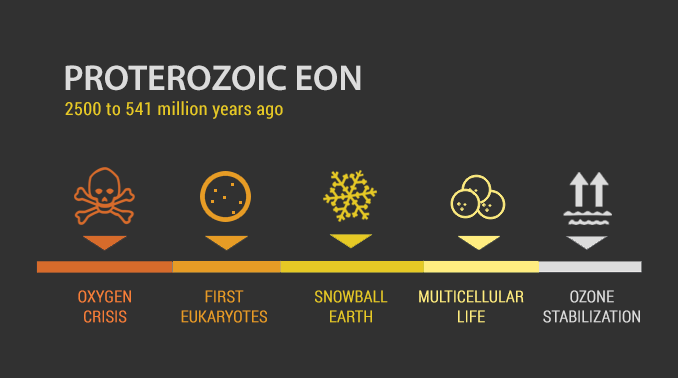
Proterozoic Eon: Eukaryotes to Multicellular Life
Earth was a very different place in the Proterozoic Eon (2500 to 541 million years ago).
Temperatures cooled down significantly compared to the Archean Eon just before. And not a lot of life could survive in these harsh conditions.
Although some microscopic bacteria known as cyanobacteria existed, they did so without oxygen.
These bacteria were known for releasing oxygen. This oxygenation of Earth resonated into the Proterozoic Eon and became a central theme.
The oxygen crisis for anaerobic cyanobacteria
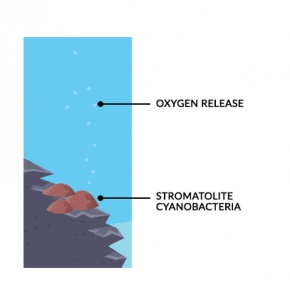
Without oxygen, only anaerobic life existed in the Proterozoic Eon. Microscopic bacteria known as cyanobacteria flourished.
The key to their survival was that they didn’t need oxygen to exist. Cyanobacteria photosynthesize sunlight and convert it into energy.
But as a waste product, they released oxygen. So, for millions of years, cyanobacteria generated oxygen. Eventually, they filled the oceans with oxygen.
The irony of cyanobacteria is that the oxygen they released was toxic to them. Cyanobacteria didn’t completely vanish in the Proterozoic Eon. By hiding in low-oxygen environments, cyanobacteria avoided their mass extinction.
“The reason why this event is called an “oxygen crisis” is that cyanobacteria threatened their own existence through their own waste oxygen.”
Earth freezes over
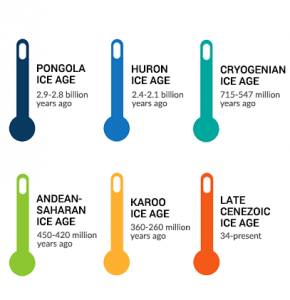
Another key event in the Proterozoic Eon was that Earth completely froze over. Again, oxygen played a key role in forming a “Snowball Earth” or “Slushball Earth”.
Remember that the atmosphere before the great oxygenation event was filled with methane.
One thing that methane did very well was trap heat in the atmosphere. Actually, it’s one of the most efficient greenhouse gases that exists.
“When oxygen is combined with methane, it produced carbon dioxide. Because there was less methane in the atmosphere, the greenhouse effect wasn’t as strong. With less heat trapped in the atmosphere, Earth froze for about 300,000,000 years.”
The presence of an ozone layer
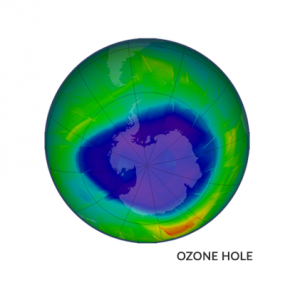
What makes Earth unique is its ozone layer. It’s essential to life on Earth because it protects us from harmful radiation from the sun.
After the Great Oxygenation Event, oxygen atoms could bond and form ozone. Over time, Earth’s ozone layer thickened in the upper atmosphere.
Before the full presence of an ozone layer, life was restricted to shallow water. This is because water shields harmful radiation.
“When ozone started protecting Earth from deadly UV rays, this enabled life to diversify on land. But it wasn’t until the Paleozoic Era that life truly took flight on land.”
The emergence of eukaryotes and multicellular organisms
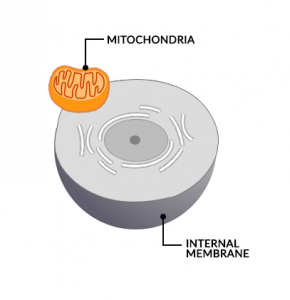
We know that Earth had the right conditions to support life. In the Proterozoic Eon, there is evidence that eukaryotes and multicellular organisms appeared on Earth.
What makes eukaryotes different from prokaryotes is they are complex cells. Their genes are stored in the form of DNA in a nucleus.
Scientists believe eukaryotic cells evolved when one simple cell engulfed another through endosymbiosis. Then, multicellular life developed because multiple cells benefited by cooperating like an ant colony.
Because these organisms did not fossilize, it still remains unclear when eukaryotes and multicellular organisms evolved on Earth. Long before, the Last Universal Common Ancestor (LUCA) existed which share the same origin as us.
Highlights from the Proterozoic Eon
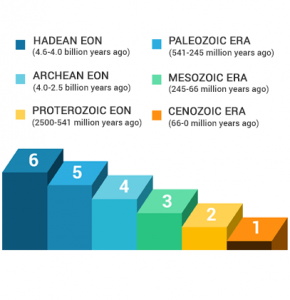
In the Proterozoic Eon, Earth completely froze into a Snowball Earth or Slushball Earth. It was one of Earth’s many ice ages.
Because of the oxygen-enriched atmosphere, the ozone layer thickened and cyanobacteria were threatened.
There’s evidence that eukaryotes and multicellular organisms evolved. Because they did not fossilize, we don’t truly understand.
It was in the Phanerozoic Eon when hard-shelled species arrived after the Cambrian Explosion.
Make sure you read more of our timelines to explore the history of Earth:
The Proterozoic Eon
The Proterozoic Era was a time period in Earth’s geologic history that spanned from about 542 to 2500 million years ago. It was a long era with numerous changes to the Earth’s system like multicellular life.
The Proterozoic Era was a pivotal phase in Earth’s history marked by the emergence of complex life forms.
During this era, significant atmospheric changes, the diversification of multicellular organisms, and the development of oxygen-rich environments laid the groundwork for the subsequent explosion of life in the Phanerozoic Eon.
Did we miss anything about Earth’s geologic history? Please use the comment form below to share any thoughts you might have.
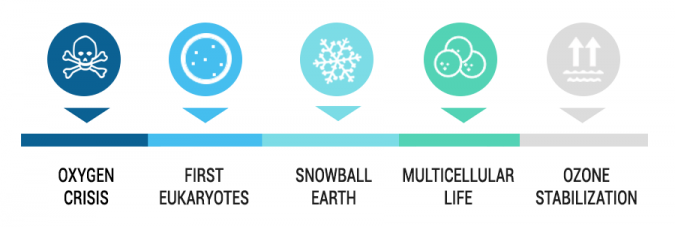

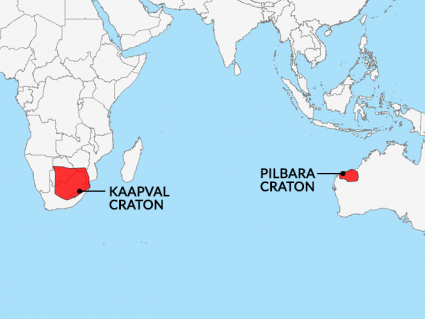
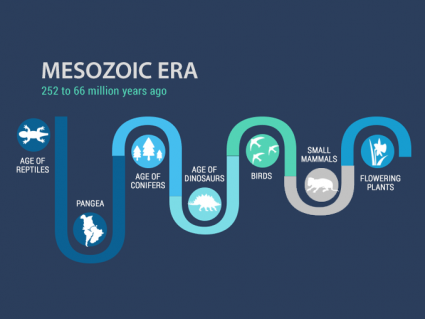
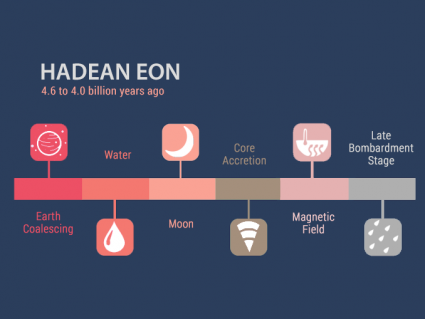
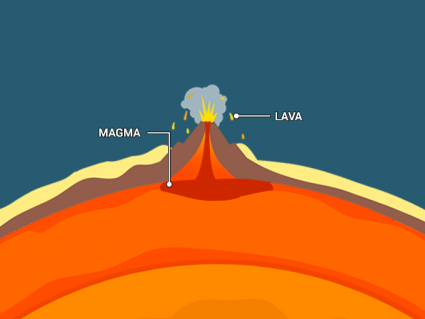
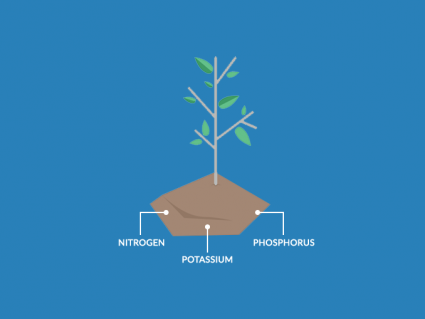
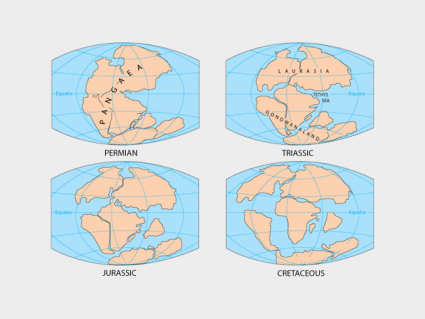
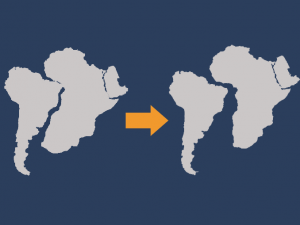
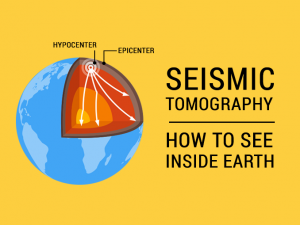
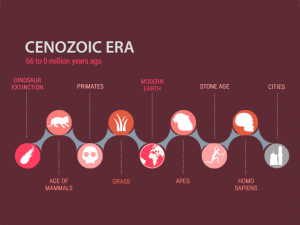
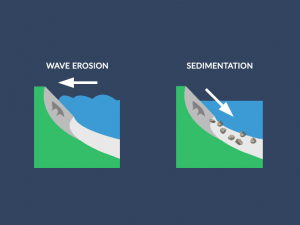

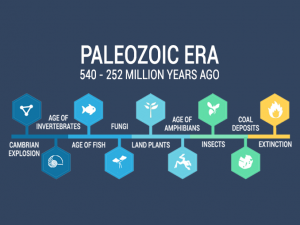
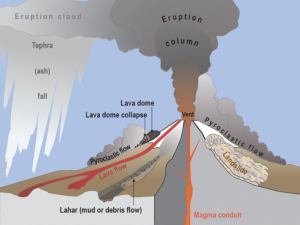

In the Proterozoic Eon, there is evidence that eukaryotes and multicellular organisms appeared on Earth. The Great Oxygenation Event occurred when cyanobacteria living in the oceans started producing oxygen through photosynthesis. The Snowball Earth is a geohistorical hypothesis that proposes during one or more of Earth’s icehouse climates, the planet’s surface became entirely or nearly entirely frozen with no liquid oceanic or surface water exposed to the atmosphere. Ozone occurs both in the Earth’s upper atmosphere and at ground level. Multicellular organisms evolved from unicellular eukaryotes at least 1.7 billion years ago. During the Proterozoic Eon, modern plate tectonics became active, and the ancient cores of the continents moved over wide areas of the globe, accumulating smaller fragments of crust and sometimes colliding with other large landmasses. The opposite also happened, leading to continental rifting.
I want the complete history of Proterozoic eon
Likely after the great oxygenation event.
When was the ozone layer made??
How did Oxigen combine with Methane make CO2?
It was really helpful thank you
I love this! Thank you